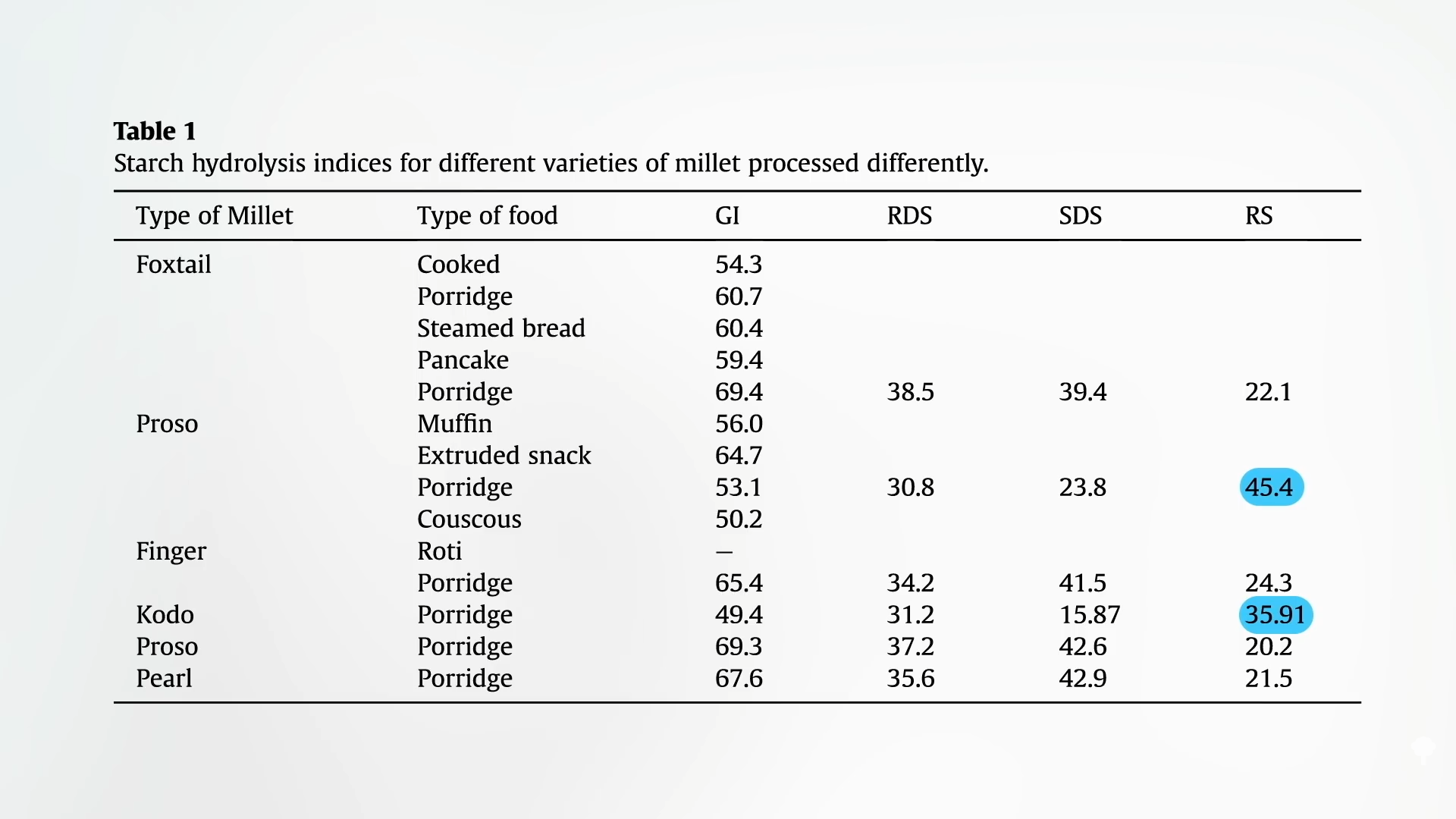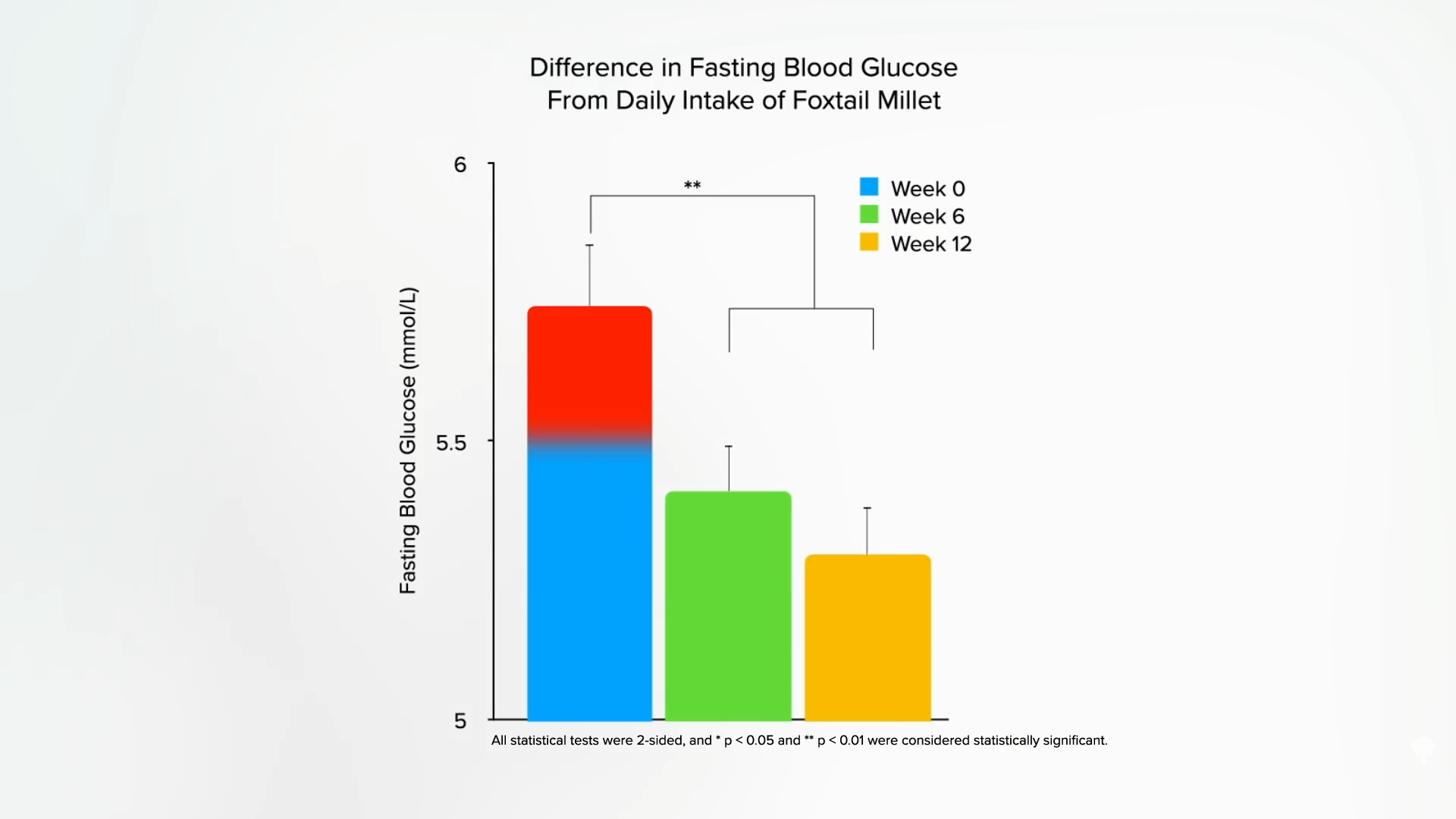What have been the exceptional outcomes of a crossover research randomizing a whole lot of individuals with diabetes to at least one and a 3rd cups of millet on daily basis?
How does millet come to the assistance of individuals with diabetes? A considerable portion of the starch in millet is resistant starch, that means it’s immune to digestion in our small gut so it offers a bounty for the great bugs in our colon. Beneath and at 0:28 in my video The Advantages of Millet for Diabetes is a desk displaying how the varied millets do. As you may see, they’re all a lot increased in resistant starch than extra widespread grains, like rice or wheat, however proso and kodo millets lead the pack.

What’s happening? The protein matrix in millet not solely acts as a bodily barrier but in addition partially sequesters our starch-munching enzyme, and the polyphenols in millet may act as starch blockers themselves.
Millet has markedly slower abdomen emptying occasions than different starchy meals, too. After we eat white rice, boiled potatoes, or pasta, our abdomen takes about an hour to digest it, earlier than it begins to slowly launch it into our intestines, and it takes about two or three hours to empty about midway. After we eat sorghum or millet, although, abdomen emptying doesn’t even begin for 2 or three hours and it might take 5 hours to empty simply midway, as you may see beneath and at 1:22 in my video.

Be aware that this was the case with each a thick millet porridge and a millet couscous. “The non-viscous millet couscous meal was additionally equally gradual in [stomach] emptying. This means that there’s an intrinsic property” of millet itself that helps decelerate the speed of abdomen emptying, which ought to blunt the blood sugar spike. What occurred when it was put to the check?
Certainly, millet brought about a few 20 p.c decrease surge in blood sugar than the identical quantity of carbohydrates within the type of rice. Keep in mind how excited I used to be to present you the way it solely took the physique about half the insulin to deal with sorghum in comparison with a grain like corn? Properly, millet did even higher, as seen right here and at 2:07 in my video.

When a gaggle of prediabetic people have been given about three quarters of a cup of millet a day, inside six weeks, their insulin resistance dropped a lot that their prediabetic fasting blood sugars was non-prediabetic blood sugars, as proven beneath and at 2:22 in my video.

This “self-controlled scientific trial,” with the identical topics earlier than and after, is only a sneaky means of claiming it’s an uncontrolled trial. There was no management group through which contributors both didn’t add the millet or added one thing else, and we all know that simply being beneath scrutiny in a research may cause folks to eat higher in different methods. So, we don’t know what function, if any, the millet itself performed. What we want is a randomized, managed, crossover trial the place the identical folks eat diets with and with out millet so we are able to see which works higher. And right here we go: a randomized, crossover research with a whole lot of sufferers following an American Diabetes Affiliation-type food plan with and with out about one and a 3rd cups of millet on daily basis. Researchers discovered that the millet-based food plan lowered hemoglobin A1C ranges, that means there was an enchancment in long-term blood sugar management, in addition to the achievement of some aspect advantages like reducing ldl cholesterol.
The goal for good blood sugar management advisable by the American Diabetes Affiliation is an A1C of lower than 7. The contributors began out at 8.37, however after just a few months on millet, their A1C dropped to a mean of 6.77, as seen right here and at 3:35 in my video.

Is it simply because they misplaced weight? No, which suggests it was an impact particular to the millet. The researchers didn’t simply give them millet, although. They blended the millet with break up black lentils and spices, and we all know from dozens of randomized, managed experimental trials in folks with and with out diabetes that consuming pulses—beans, break up peas, chickpeas, and lentils—can enhance long-term measures of blood sugar management like A1C ranges. So, whereas the researchers “concluded that millets do have a possible for a protecting function within the administration of diabetes,” a extra correct conclusion is perhaps a mixture of millets and lentils may be protecting. The spices could have helped, too. The researchers didn’t say which spices have been used, and I couldn’t get in touch with the authors, however the same research achieved by one of many similar researchers included a few each day tablespoon of a mix of fenugreek, coriander, cumin, and black pepper, with a fifth spice, maybe cinnamon or turmeric.


